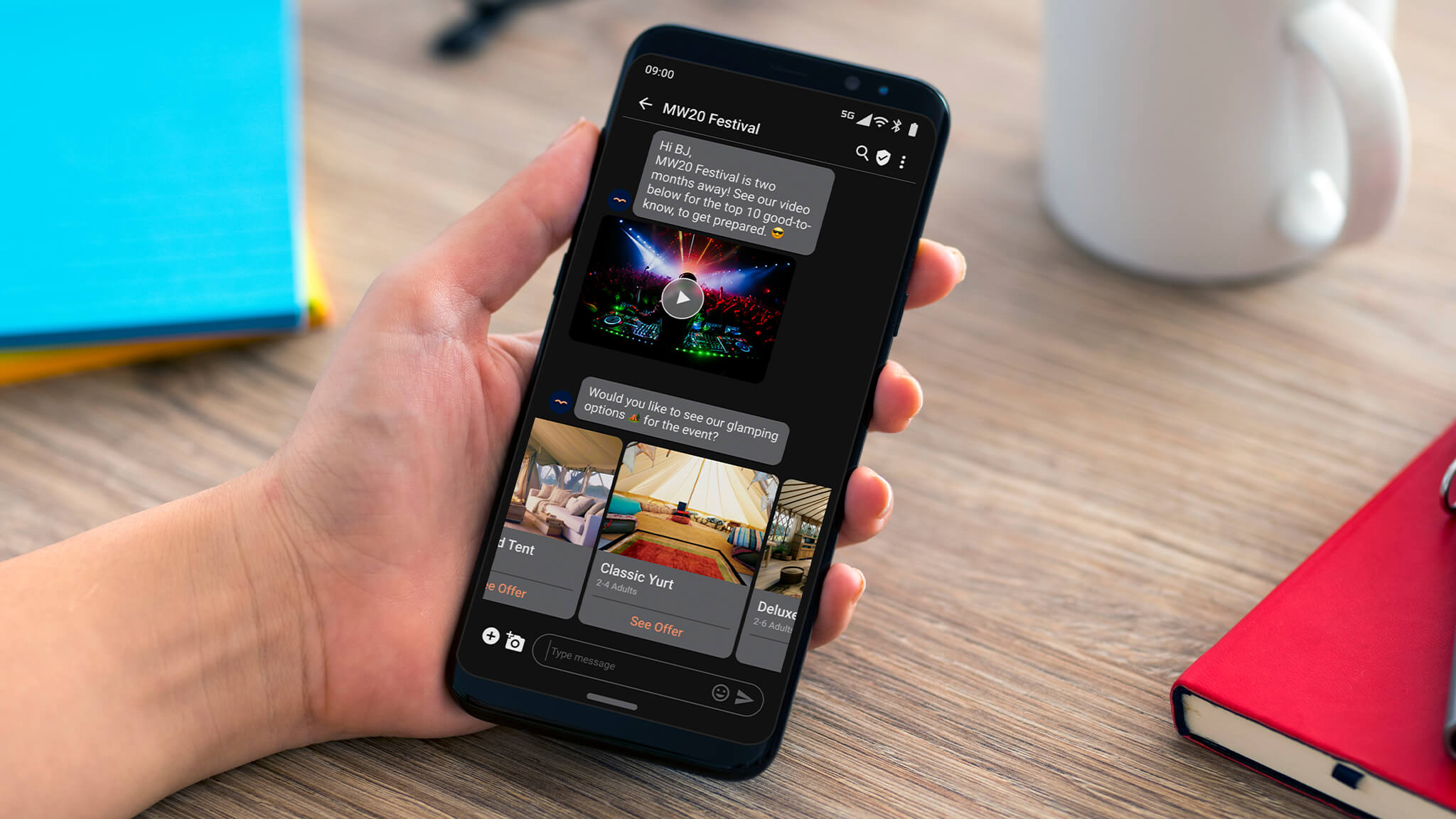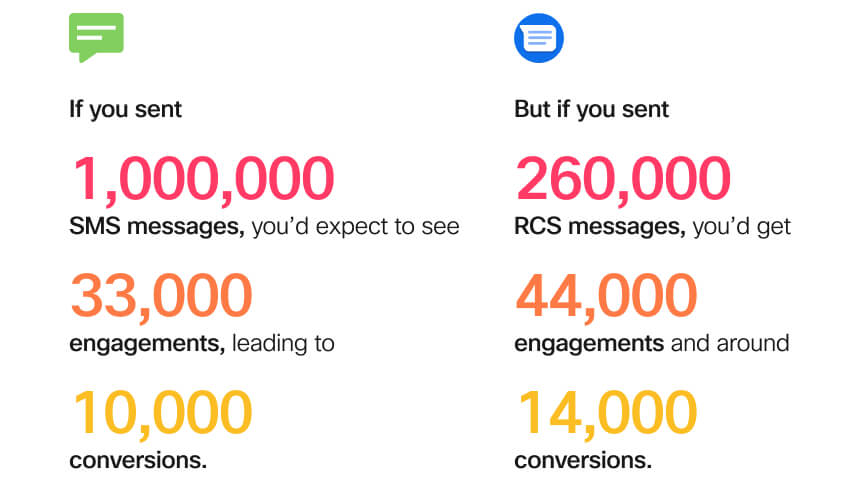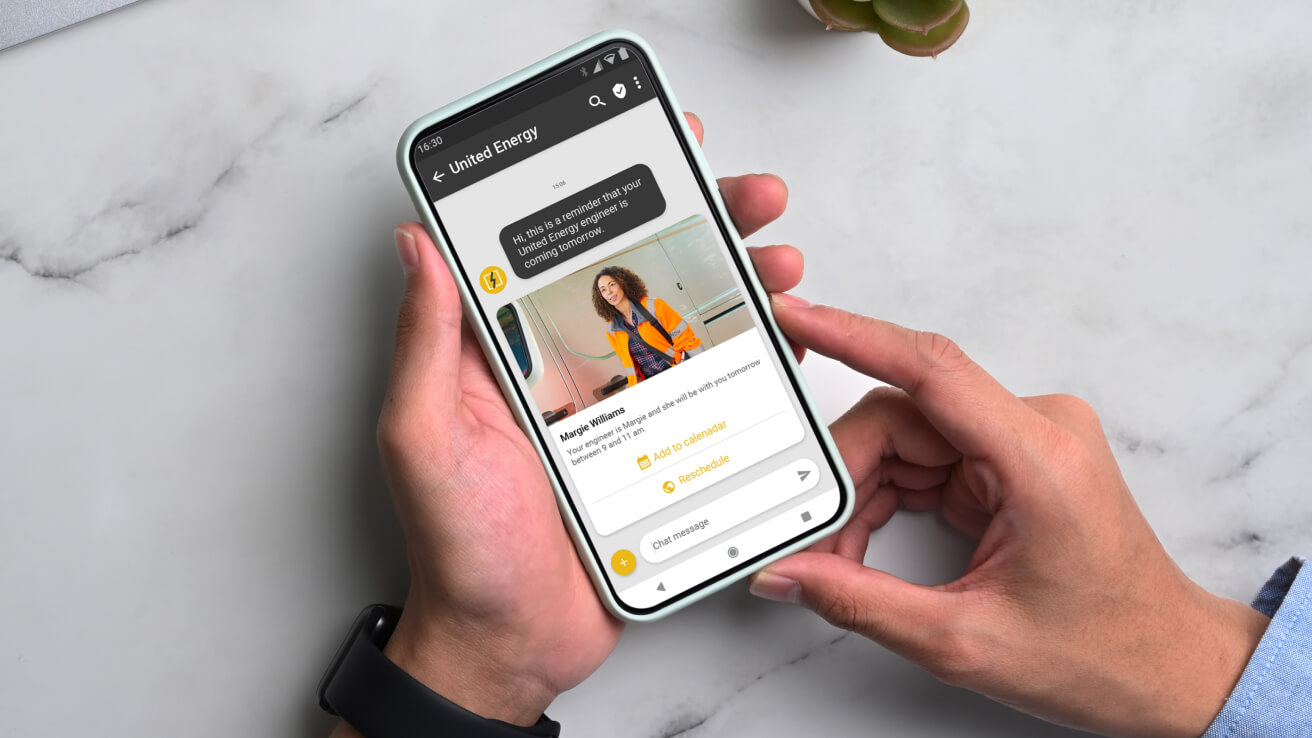Level up SMS: How to master conversational messaging with RCS.
Learn why forward-thinking brands use Rich Communication Services (RCS) to deliver compelling customer interactions that drive competitive advantage.

Contents
Despite first emerging in 1992, Short Message Service (SMS) remains one of the most popular communication channels worldwide—and here’s why.
SMS is simple, accessible, and personable, offering a direct and secure line of contact between the world’s 7.41 billion mobile users. People also quickly acknowledge SMS, with 80% of consumers checking their text notifications within five minutes of receipt.
This makes it an ideal tool for reaching out and engaging customers. But what if you could combine SMS’s expansive reach with the rich, brand-verified messaging offered by web-based channels like WhatsApp and Facebook Messenger?
In this blog, we’ll explore how Rich Communication Services (RCS) can help you meet rising demand for timely, contextual two-way interactions—and drive competitive advantage through increased automation and personalization.
Why conversational messaging matters
Before we unpack how RCS works, we must recognize the trends driving demand for branded conversational messages.
Connected consumers increasingly expect timely, personalized interactions that inform and add value while retaining context across every channel. They also want more control over how they engage with your brand—including intuitive self-service capabilities.
By connecting your backend systems to the latest digital channels, you can more easily orchestrate and automate meaningful interactions based on a real-time exchange of data.
For instance, customer actions and pre-defined scenarios can trigger interactive alerts and notifications—such as delivery updates and payment reminders. A customer may then respond to these in-channel, to resolve the payment, for example, there and then.
By 2027 Gartner expects chatbots to become the primary service channel for a quarter of all businesses.
Consumers are also increasingly comfortable using AI chatbots to purchase goods and services, manage fulfilment preferences, and solve simple queries quickly. And by 2027, Gartner expects chatbots to become the primary service channel for a quarter of all businesses.
Plus, our customer experience research report found that more than 70% of Gen Z and millennials prefer communicating using digital channels. And when they do, they expect you to proactively address their needs while personalizing every interaction.
So, how can RCS help you make this happen?
Introducing RCS for conversational messaging
RCS offers a step up from SMS by enabling real-time messaging in an app-like rich environment. And it's quickly gaining support from major carriers as an operator provided alternative to over-the-top (OTT) messaging apps.

This means business users can apply digital content to real-time customer conversations, such as:
Branded UI components and verified logos and badges
High-resolution multimedia images and video content
Contextual buttons that trigger an action or outcome
RCS enables far-reaching use cases across all industries and business functions, helping organizations create branded messaging journeys at scale.
Banks can use RCS to alert shoppers of suspected fraud, letting them validate authentic purchases or escalate transactions for investigation with a single touch. These inputs also help clarify customer spending habits and glean greater insight into emerging threats and sources of fraudulent activity.
Healthcare providers can automate patient reminders or send alerts to help them take their medication at prescribed times. Two-way RCS interactions let patients quickly confirm they’ve taken their dosage and report any changes to their condition, helping create an accurate picture of their health.
Plus, RCS messages feature verified branding, helping your messages stand out in your inbox and enabling customers to easily differentiate you from fraudulent impersonators.
Remember when considering the shift from SMS to RCS, it's crucial to have a solid grasp on the basics of SMS, such as SMS notifications or reminders and to incorporate those learnings to RCS.
The time is now for RCS integration
With an estimated 1 billion active users already, RCS offers a remarkable opportunity to increase automation and meet rising expectations for instant, two-way brand interactions.
As Nick Lane, Chief Messaging Officer and Founder of Mobilesquared, shared at a recent Cisco event, RCS also offers superior engagement metrics over SMS.

Recent strides in collaboration between network operators, Messaging as a Platform (MaaP) providers, and device manufacturers are also accelerating RCS adoption. And with a proven solution partner that understands your industry challenges and customer needs, you too can add RCS to your communications toolkit.
Please get in touch to learn more about diversifying your messaging services, automating routine contact center processes, and enhancing end-to-end customer journeys.



